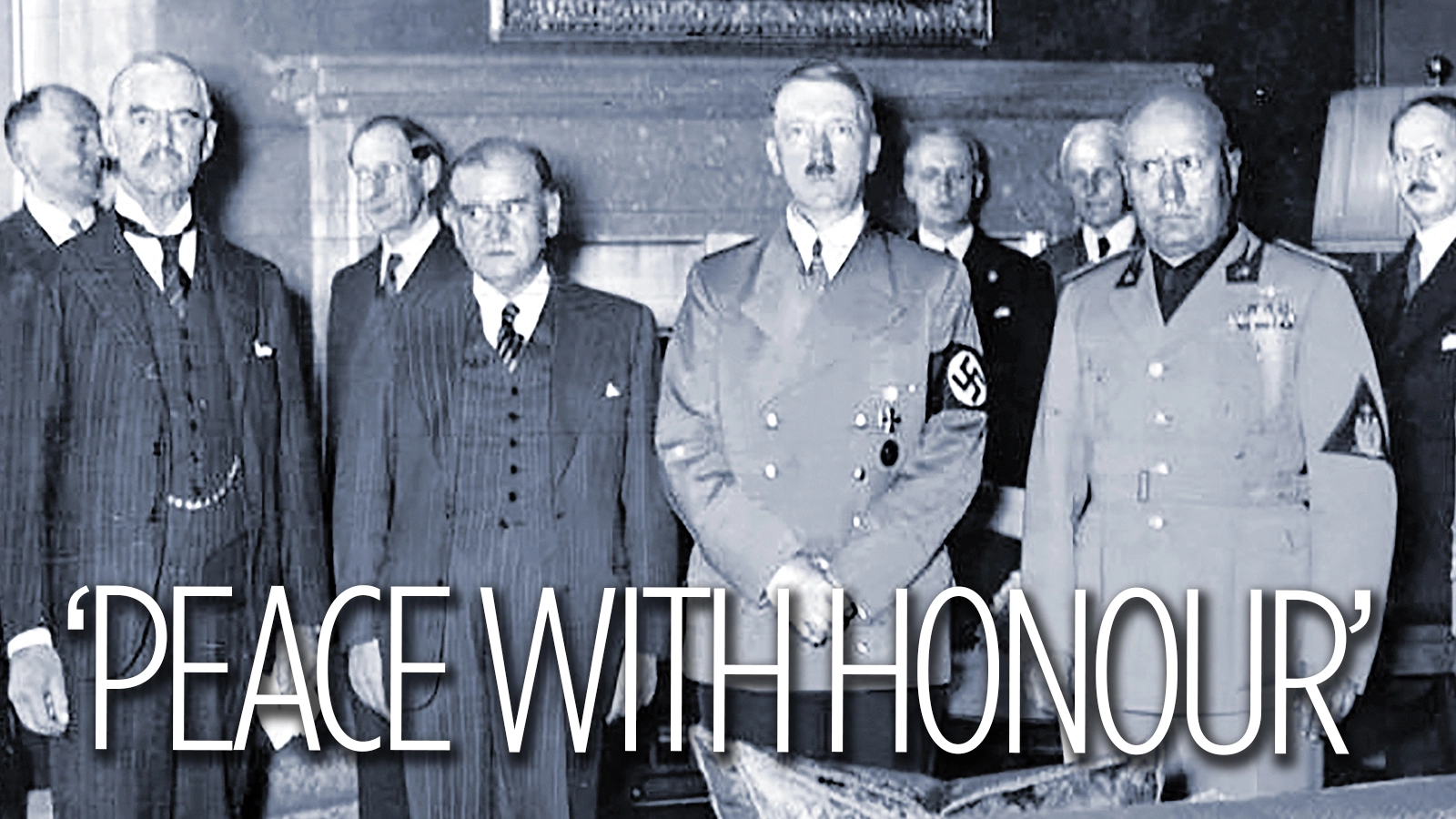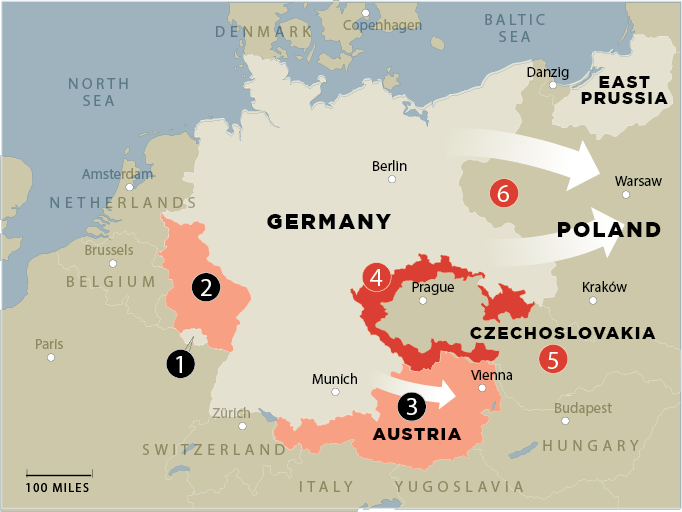Eighty-five years ago Saturday — Sept. 30, 1938 — British Prime Minister Neville Chamberlain returned from meetings in which he agreed to Adolf Hitler's demands for German occupation of the Sudetenland in Czechoslovakia in return for a promise this would be Hitler's final bid for more territory.
Chamberlain called it “Peace with honour.” Everyone else called it appeasement.
The 1930s: Hitler Rearms Germany While Europe Dreads Another War
Feelings grew in Britain and France that the terms of the Treaty of Versailles — which had ended the World War in June 1919 — had been too harsh on Germany, requiring Germany to give up territory and to make reparations to allied nations.
When Nazi party leader Adolf Hitler became Chancellor of Germany in January 1933, his demands for a rearmed Germany and restoration of “German” territories sounded reasonable to some.
May 1933
Although the city-state of Danzig is a “free city” administered by the United Nations, parliamentary elections there leave Nazis the majority party.
Oct. 19
While the League of Nations discusses arms reduction, Hitler demands “military parity” and the right to rearm Germany. He withdraws Germany from the League.
Aug. 19, 1934
Seventeen days after the death of German President Paul von Hindenburg, Germans vote overwhelmingly to combine the posts of chancellor and president. This gives Hitler supreme power of Germany.
July
Austrian Nazis assassinate that country's Chancellor Engelbert Dollfuss, but government troops manage to maintain control.
Jan. 13, 1935
Saarland — which had been separated from Germany by the Treaty of Versailles — overwhelmingly votes to return to Germany.
March
Hitler violates the Treaty of Versailles by reinstating military conscription and announcing an increase in the size of the German army and navy and the creation of a German air force. England and France issue muted protests.
March 7, 1936
Two hours after proposing a 25-year peace pact with Britain, France, Belgium and Italy, Hitler announces to the Reichstag — the German parliament — his intention to reoccupy more
territory that had been stripped from the country after the war, along the Rhine River and known as the Rhineland. German troops enter the area and are met by rejoicing crowds.
July 11, 1936
An agreement between Germany and Austria recognizes “full sovereignty” for Austria but calls for the release of Nazi political prisoners and allows political opposition a say in Austrian government.
Oct. 23, 1936
Germany and Italy sign a secret treaty recognizing each other's territories. On Nov. 1, Italian Prime Minister Benito Mussolini uses the word “Axis” to describe the two countries.
Nov. 5, 1937
Hitler reveals to his top military leaders a secret plan for the acquisition of “Lebensraum,” or “living space” for the German people at the expense of Poland, Russia and Ukraine. He orders production of munitions ramped up.
Feb. 12, 1938
After a plot by Nazi operatives to assassinate Austrian Chancellor Kurt Schuschnigg is uncovered, Schuschnigg meets with Hitler. Hitler demands the release of political prisoners in return for a reaffirmation of Austria's sovereignty.
Schuschnigg reluctantly agrees. He schedules a referendum to be held March 13 asking Austrians whether or not they want to become part of Germany.
March 12, 1938
On the eve of the referendum, German troops — aided by Austrian Nazis — march into Vienna unopposed. Schuschnigg is arrested and sent to a concentration camp. Again, Britain and France offer only token protests.


